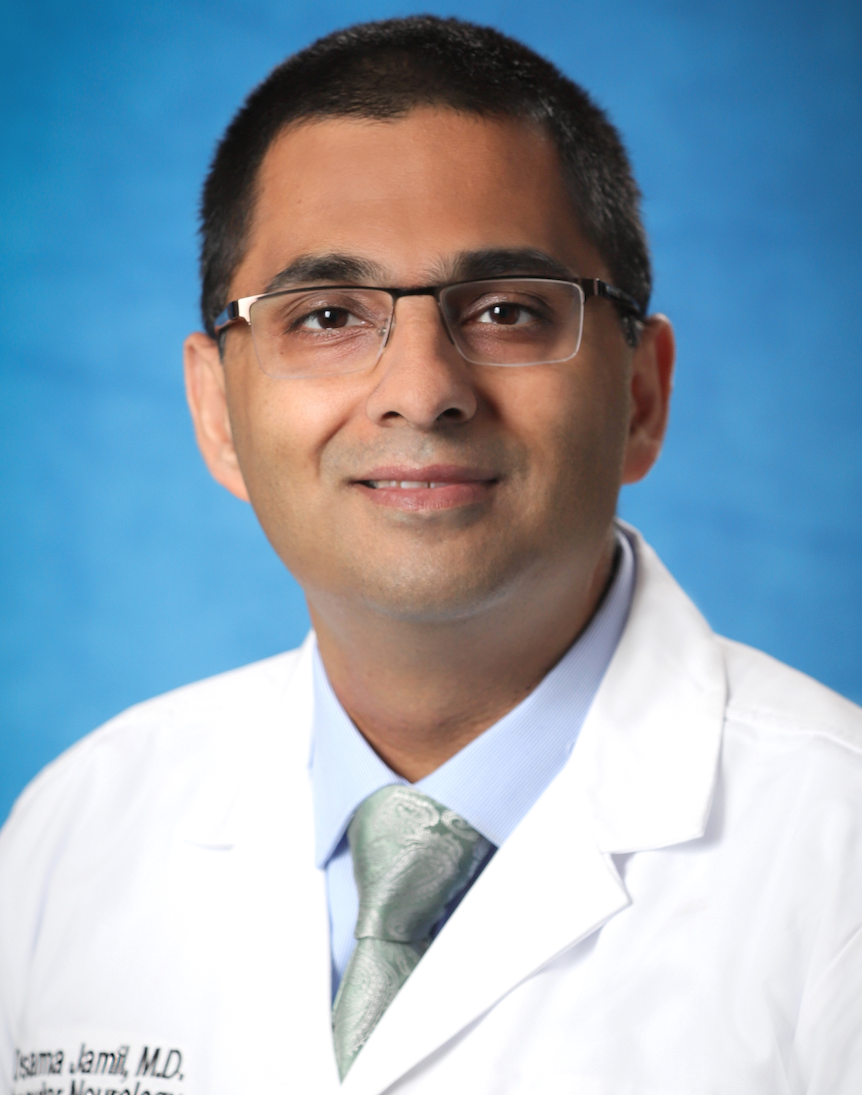Neuroscience Program for Treating Stroke
Every minute counts when you or someone you love is experiencing the symptoms of a stroke. Knowing that the specially trained neuroscience team and emergency department personnel at Doctors Hospital of Laredo are ready to respond to stroke emergencies around the clock can make all the difference.
Doctors Hospital of Laredo has a dedicated stroke unit and is certified as a Primary Stroke Center by The Joint Commission. This recognition is considered to be the gold standard for stroke patient care. In addition, the hospital has received the American Heart Association®/American Stroke Association® 2020 Get With The Guidelines® Stroke Gold Achievement Award.
Find a Doctor
For a non-emergency referral to a physician at Doctors Hospital who can help assess your risk for stroke, call our free physician referral service at 1-877-992-1711 or search for a doctor online.
Stroke Explained
A stroke occurs when blood to the brain is blocked or stopped. Within a few minutes, brain cells begin to die. According to the Centers for Disease Control and Prevention, one person in the United States is affected by stroke every four minutes.
What’s more, according to the American Heart Association, stroke is the fifth leading cause of death in the US and can lead to long-term disability. Problems that can arise include everything from weakness in an arm or leg after a small stroke to paralysis and loss of speech in larger strokes. This is why it's so important for someone who is having a stroke to get medical attention as quickly as possible.
There are two kinds of stroke: ischemic and hemorrhagic. In ischemic stroke, the most common type, a blood clot blocks a blood vessel in the brain. In hemorrhagic stroke, a blood vessel breaks and bleeds into the brain. A transient ischemic attack (TIA) occurs when the blood supply to the brain is interrupted for a brief period of time. A TIA may serve as a warning sign that you are at increased risk for a more serious stroke.
A Complete Stroke Care Process
Doctors Hospital offers a comprehensive neuroscience program that provides the entire continuum of care for stroke patients. When a patient arrives at the ER, the team stabilizes them and determines which type of stroke they are having. The patient will then undergo a series of tests and procedures to treat the stroke and determine its cause.
Patients who suffer a massive stroke or have significant brain swelling may require surgery for decompression of swelling or hemorrhages in parts of the brain. A neurosurgeon from the neuroscience program will perform these procedures when needed.
After the patient is discharged, follow-up care with a neurologist may be recommended. Our neurosciences program has specialists ready to provide care as needed.
Meet the Medical Director
Osama Jamil, MD, Neurohospitalist and Medical Director of the Primary Stroke Center
 Dr. Jamil completed his neurology residency at the University of Utah in Salt Lake City followed by a fellowship in Vascular Neurology at the University of Texas Health Science Center in Houston, Texas. He earned his medical degree from King Edward Medical College in Lahore, Pakistan. He is a member of American Academy of Neurology and is board certified in Neurology and Vascular Neurology.
Dr. Jamil completed his neurology residency at the University of Utah in Salt Lake City followed by a fellowship in Vascular Neurology at the University of Texas Health Science Center in Houston, Texas. He earned his medical degree from King Edward Medical College in Lahore, Pakistan. He is a member of American Academy of Neurology and is board certified in Neurology and Vascular Neurology.
Stroke, the Great Disabler: Understanding, Preventing and Overcoming the Threat
Dr. Jamil was featured in the Laredo Morning Times discussing how you can be empowered to combat stroke and its debilitating consequences.
Know the Warning Signs of a Stroke
Symptoms of possible stroke include:
- Numbness or weakness of the face, arm or leg—especially on one side of the body
- Difficulty with speaking or understanding speech
- Trouble seeing in one or both eyes
- Trouble walking, dizziness, loss of balance or coordination
- Severe headache with no known cause
B.E. F.A.S.T.
Stroke can result in paralysis or weakness on one side of the body, vision problems, memory loss, thinking and reasoning problems, and difficulty speaking, understanding speech and swallowing. The severity of effects depends heavily on how fast a stroke victim receives medical treatment. Here are some tips from the American Heart Association's Stroke Association branch on quickly recognizing stroke. If you think you or someone around you may be experiencing stroke, don't wait — call 9-1-1.
Is there a sudden loss of balance?
Is there loss of vision in one or both eyes?
Does their face look uneven or droop?
Does one arm drift downward or hang down?
Ask the person to repeat a simple sentence, like "Dick and Jane went on a picnic." Are the words slurred? Does the person repeat the phrase correctly?
Is there a terrible headache? More terrible than any that they have ever felt?
If the person shows any of these symptoms, time is very important. Call 911 immediately and get to the hospital fast.
Preventing Stroke
The best way to keep your brain healthy is to avoid a stroke in the first place. The best ways to prevent stroke are to do the following:
- Keep your blood pressure controlled through lifestyle changes and/or medications
- Don't smoke or stop smoking
- Take steps to manage your cholesterol
- Limit your alcohol consumption
- Exercise regularly
- Maintain a healthy weight

